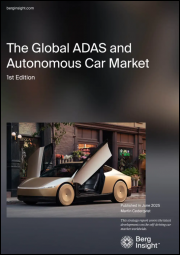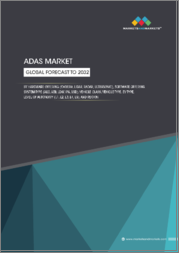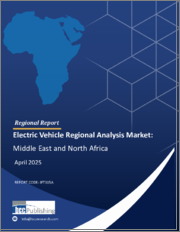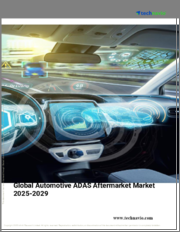
|
시장보고서
상품코드
1716347
세계의 첨단 운전자 보조 시스템(ADAS) 시장 : 구성 요소별, 시스템별, 차종별, 센서 유형별, 최종 사용자별, 지역별 분석 및 예측(-2032년)Advanced Driver Assistance Systems Market Forecasts to 2032 - Global Analysis By Component, System (Adaptive Cruise Control, Automatic Emergency Braking and Night Vision), Vehicle Type, Sensor Type, End User and By Geography |
||||||
Stratistics MRC에 따르면 세계의 첨단 운전자 보조 시스템(ADAS) 시장은 2025년 365억 1,000만 달러에 달하고, 예측 기간 동안 CAGR은 14.2%를 나타내, 2032년에는 1,000억 9,000만 달러에 이를 것으로 전망되고 있습니다.
첨단 운전자 보조 시스템(ADAS)은 운전자의 운전과 주차를 지원하기 위해 설계된 안전기술의 집합체입니다. 차선 유지 지원, 자동 긴급 브레이크, 적응형 크루즈 컨트롤, 주차 지원, 충돌 회피, 보행자 감지 등이 있습니다.
세계보건기구(WHO)에 따르면 교통사고로 인한 사망자는 세계에서 매년 약 119만 명에 이릅니다.
차량 안전성 향상
자동차의 안전성 향상은 첨단 운전자 보조 시스템(ADAS) 시장에 큰 플러스의 영향을 줍니다. 보다 안전한 자동차에 대한 소비자의 요구가 높아짐에 따라, 자동차 제조업체는 자동 긴급 브레이크, 레인 키핑 어시스트, 어댑티브 크루즈 컨트롤 등의 고급 안전기 능을 탑재하게 되어 왔습니다. 이러한 기술 혁신은 사고를 줄이고 운전자와 동승자의 안전성을 높여 전체적인 운전체험을 향상시킵니다.
높은 통합 비용
첨단 운전자 보조 시스템(ADAS) 시장에 있어서 통합 비용의 높이는 큰 과제이며, 시장 성장 촉진요인·과제가 되고 있습니다. 복잡한 센서, 소프트웨어, 하드웨어를 자동차에 통합하기 위한 비용은 생산 비용을 상승시켜, ADAS 시스템을 제조업체와 소비자 모두에게 손이 닿기 어려운 것으로 하고 있습니다. 그 결과, 특히 보급 가격대의 차량 부문에의 도입이 늦어, 시장 전체의 성장이 제한되어, 기술 진보나 혁신의 페이스가 둔화합니다.
정부 규제
정부의 규제는 안전기준을 촉진하고 기술 혁신을 촉진함으로써 첨단 운전자 보조 시스템(ADAS) 시장에 낙관적이고 촉진적인 영향을 주고 있습니다. 이러한 요구 사항은 ADAS에 대한 소비자의 신뢰를 키우고 보급을 가속화합니다.
사이버 보안에 대한 우려
사이버 보안에 대한 우려는 차량 네트워크 및 데이터 통신에 취약성을 초래함으로써 첨단 운전자 보조 시스템(ADAS) 시장에 큰 과제를 가져오고 있습니다. ADAS는 실시간 데이터와 커넥티드 기술에 크게 의존하고 있기 때문에 이러한 위협은 보급을 방해하고 규제 당국의 감시를 강화하는 것으로 이어져 이 분야의 기술 혁신과 시장 성장을 둔화시킵니다.
COVID-19의 영향
COVID-19의 대유행은 첨단 운전자 보조 시스템(ADAS) 시장에 큰 영향을 주어 생산과 공급망의 혼란을 일으켰습니다. 자동차 생산량의 감소로 ADAS 기술에 대한 수요는 둔화되었지만, 유통은 비접촉 기술의 채택을 가속화하고 안전 기능에 대한 관심을 높였습니다. 자동차 산업이 회복됨에 따라 첨단 운전자 보조 시스템(ADAS) 시장은 회복되어 자동화, 안전성, 스마트 기술에 대한 관심이 높아져 장기적인 성장을 이끌어 왔습니다.
예측 기간 동안 적응형 크루즈 컨트롤(ACC) 분야가 최대화될 전망
예측 기간 동안 적응형 크루즈 컨트롤(ACC) 분야가 가장 큰 시장 점유율을 차지할 것으로 예측됩니다. ACC는 선행 차량과의 안전한 차간 거리를 유지하기 위해 차량이 자동으로 속도를 조정할 수 있게 하고 운전자의 피로와 사고의 위험을 줄이기 위해서입니다. 보다 스마트하고 안전한 자동차에 대한 소비자 수요가 증가함에 따라 ACC의 주류 자동차 모델로의 통합이 ADAS 채용을 가속화하고 있습니다. 이 기술이 가져온 좋은 영향은 기술 혁신, 시장 성장, 보다 고급 기능의 개발을 촉진합니다.
예측 기간 동안 CAGR이 가장 높을 것으로 예상되는 이미지 센서 분야
차선 검출, 물체 인식, 보행자 감시 등의 기능은 이러한 센서가 가능하게 하는 고품질의 실시간 화상 처리에 의해 실현되므로 예측 기간 동안 이미지 센서 분야는 가장 높은 성장률을 나타낼 것으로 예측됩니다. 따라서 이미지 센서는 ADAS의 안전성, 신뢰성 및 기능성을 향상시키기 위해 자율 주행 차량 및 반자율 주행 차량 기술에 필수적인 구성 요소입니다. 자동차 산업에 의한 ADAS의 채용은 이미지 센서 기술의 지속적인 개발에 의해 더욱 촉진되고 있습니다.
최대 점유율을 차지하는 지역
예측 기간 동안 아시아태평양은 안전성, 편의성, 차량 자동화에 대한 수요 증가로 최대 시장 점유율을 차지할 것으로 예측됩니다. 소비자 의식 증가, 정부 규제, 센서, 카메라, 레이더 시스템의 기술 진보가 시장을 진전시키고 있습니다. ADAS는 운전 안전을 높이고 사고를 줄이고 전반적인 운전 경험을 향상시켜 소비자의 선호도에 긍정적인 변화를 가져다줍니다. 성장하는 자동차 산업은 전기자동차의 채택과 함께 이 지역에서 ADAS 통합을 더욱 강화하고 있습니다.
CAGR이 가장 높은 지역 :
적응형 크루즈 컨트롤, 차선 유지 지원, 충돌 회피 등의 기술을 통합함으로써 ADAS는 자동차의 안전성을 높이고 사고율을 줄입니다. 또한 자율주행차의 개발을 촉진하고 안전기준의 규제 준수를 강화합니다. 또한 이 시장은 기술 혁신을 촉진하고 AI, 센서, 차량 연결의 진보에 박차를 가하고 궁극적으로는 이 지역 전역에서 보다 스마트하고 효율적인 운송 시스템에 공헌합니다.
무료 사용자 지정 오퍼링 :
이 보고서를 구독하는 고객은 다음 무료 맞춤설정 옵션 중 하나를 사용할 수 있습니다.
- 기업 프로파일
- 추가 시장 기업의 종합적 프로파일링(3개사까지)
- 주요 기업의 SWOT 분석(3개사까지)
- 지역 세분화
- 고객의 관심에 응한 주요국 시장 추계·예측·CAGR(주 : 타당성 확인에 따름)
- 경쟁 벤치마킹
- 제품 포트폴리오, 지리적 존재, 전략적 제휴에 기반한 주요 기업 벤치마킹
목차
제1장 주요 요약
제2장 서문
- 개요
- 이해관계자
- 조사 범위
- 조사 방법
- 데이터 마이닝
- 데이터 분석
- 데이터 검증
- 조사 접근
- 조사 자료
- 1차 조사 자료
- 2차 조사 정보원
- 전제조건
제3장 시장 동향 분석
- 성장 촉진요인
- 성장 억제요인
- 기회
- 위협
- 최종 사용자 분석
- 신흥 시장
- COVID-19의 영향
제4장 Porter's Five Forces 분석
- 공급기업의 협상력
- 구매자의 협상력
- 대체품의 위협
- 신규 참가업체의 위협
- 경쟁 기업간 경쟁 관계
제5장 세계의 첨단 운전자 보조 시스템(ADAS) 시장 : 구성 요소별
- 하드웨어
- 제어 장치
- 액추에이터
- 소프트웨어
- 머신러닝 알고리즘
- 매핑 및 네비게이션 소프트웨어
- 데이터 처리 및 통합 소프트웨어
제6장 세계의 첨단 운전자 보조 시스템(ADAS) 시장 : 시스템별
- 어댑티브 크루즈 컨트롤(ACC)
- 자동 긴급 제동(AEB)
- 차선 이탈 경고(LDW)
- 차선 유지 보조(LKA)
- 사각지대 감지(BSD)
- 주차 보조
- 교통 표지판 인식(TSR)
- 보행자 감지
- 운전 모니터링 시스템(DMS)
- 나이트 비전
제7장 세계의 첨단 운전자 보조 시스템(ADAS) 시장 : 차종별
- 승용차
- 상업차
- 전기자동차(EV)
- 자율주행차
제8장 세계의 첨단 운전자 보조 시스템(ADAS) 시장 : 센서 유형별
- 이미지 센서
- 레이더 센서
- 레이저 센서
- 초음파 센서
- 적외선 센서
- 정전용량 센서
- 생체인식 센서
제9장 세계의 첨단 운전자 보조 시스템(ADAS) 시장 : 최종 사용자별
- 주문자 상표 부착 생산업체(OEM)
- 애프터마켓
제10장 세계의 첨단 운전자 보조 시스템(ADAS) 시장 : 지역별
- 북미
- 미국
- 캐나다
- 멕시코
- 유럽
- 독일
- 영국
- 이탈리아
- 프랑스
- 스페인
- 기타 유럽
- 아시아태평양
- 일본
- 중국
- 인도
- 호주
- 뉴질랜드
- 한국
- 기타 아시아태평양
- 남미
- 아르헨티나
- 브라질
- 칠레
- 기타 남미
- 중동 및 아프리카
- 사우디아라비아
- 아랍에미리트(UAE)
- 카타르
- 남아프리카
- 기타 중동 및 아프리카
제11장 주요 발전
- 계약, 파트너십, 협업, 합작투자
- 인수와 합병
- 신제품 발매
- 사업 확대
- 기타 주요 전략
제12장 기업 프로파일링
- Bosch
- Continental
- Denso Corporation
- Mobileye
- Aptiv
- Valeo
- ZF Friedrichshafen AG
- Harman International
- Magna International
- Trumax
- Clarion
- Nvidia Corporation
- Hyundai Mobis
- Panasonic Corporation
- Texas Instruments
- Autoliv
- Visteon Corporation
- Thales Group
- LidarTech
- NXP Semiconductors
According to Stratistics MRC, the Global Advanced Driver Assistance Systems Market is accounted for $36.51 billion in 2025 and is expected to reach $100.09 billion by 2032 growing at a CAGR of 14.2% during the forecast period. Advanced Driver Assistance Systems (ADAS) are a collection of safety technologies designed to assist drivers in driving and parking. These systems use a combination of sensors, cameras, radar, and artificial intelligence to improve vehicle safety, enhance driving comfort, and reduce human error. Common ADAS features include lane-keeping assistance, automatic emergency braking, adaptive cruise control, parking assistance, collision avoidance, and pedestrian detection. By providing real-time data and alerts, ADAS helps drivers make more informed decisions, potentially preventing accidents and improving road safety.
According to the World Health Organization, nearly 1.19 million deaths are recorded due to road traffic crashes each year worldwide.
Market Dynamics:
Driver:
Enhanced Vehicle Safety
Enhanced vehicle safety has a significant positive impact on the Advanced Driver Assistance Systems (ADAS) market. As consumer demand for safer vehicles grows, automakers are increasingly incorporating advanced safety features like automatic emergency braking, lane-keeping assist, and adaptive cruise control. These innovations reduce accidents, improve driver and passenger safety, and enhance overall driving experience. Governments' regulatory pressures and consumer awareness further drive the adoption of ADAS, thereby accelerating market growth and innovation in this sector.
Restraint:
High Integration Costs
High integration costs pose a significant challenge for the Advanced Driver Assistance Systems (ADAS) market, hindering its widespread adoption. The expense of integrating complex sensors, software, and hardware into vehicles increases production costs, making ADAS systems less affordable for both manufacturers and consumers. This results in delayed deployment, particularly in budget-friendly vehicle segments, limiting the overall growth of the market and slowing the pace of technological advancements and innovations.
Opportunity:
Government Regulations
Government regulations have an optimistic and driving impact on the Advanced Driver Assistance Systems (ADAS) market by promoting safety standards and encouraging innovation. Regulations, such as mandatory vehicle safety features, push manufacturers to integrate advanced technologies like collision avoidance and lane-keeping assistance into vehicles. These requirements foster consumer trust in ADAS and accelerate adoption. Additionally, regulations around reducing traffic accidents and environmental impact contribute to increased demand for ADAS, enhancing overall market growth and technological advancements.
Threat:
Cybersecurity Concerns
Cybersecurity concerns pose a significant challenge to the Advanced Driver Assistance Systems (ADAS) market by creating vulnerabilities in vehicle networks and data communication. The potential for hacking, data breaches, and system malfunctions undermines consumer trust and raises safety risks. As ADAS relies heavily on real-time data and connected technologies, these threats hinder widespread adoption and lead to increased regulatory scrutiny, thereby slowing innovation and market growth in this sector.
Covid-19 Impact
The COVID-19 pandemic significantly impacted the Advanced Driver Assistance Systems (ADAS) market, causing disruptions in production and supply chains. While demand for ADAS technology slowed due to reduced vehicle production, the pandemic also accelerated the adoption of contactless technologies, increasing interest in safety features. As the automotive industry recovered, the ADAS market rebounded, with growing focus on automation, safety, and smart technologies driving long-term growth.
The adaptive cruise control (ACC) segment is expected to be the largest during the forecast period
The adaptive cruise control (ACC) segment is expected to account for the largest market share during the forecast period, because ACC allows vehicles to automatically adjust their speed to maintain a safe distance from the vehicle ahead, reducing driver fatigue and the risk of accidents. As consumer demand for smarter, safer vehicles grows, ACC's integration into mainstream automotive models accelerates ADAS adoption. This technology's positive impact drives innovation, market growth, and the development of more advanced features.
The image sensors segment is expected to have the highest CAGR during the forecast period
Over the forecast period, the image sensors segment is predicted to witness the highest growth rate, because features like lane detection, object recognition, and pedestrian monitoring are made possible by the high-quality, real-time picture processing made possible by these sensors. Image sensors are therefore an essential component of autonomous and semi-autonomous vehicle technologies since they improve the safety, dependability, and functionality of ADAS. The car industry's adoption of ADAS is further fueled by ongoing developments in image sensor technology.
Region with largest share:
During the forecast period, the Asia Pacific region is expected to hold the largest market share due to increasing demand for safety, convenience, and vehicle automation. Rising consumer awareness, government regulations, and technological advancements in sensors, cameras, and radar systems are propelling the market forward. ADAS improves driving safety, reduces accidents, and enhances overall driving experience, leading to a positive shift in consumer preferences. The growing automotive industry, along with the adoption of electric vehicles, further boosts ADAS integration in the region.
Region with highest CAGR:
Over the forecast period, the North America region is anticipated to exhibit the highest CAGR, owing to integrating technologies such as adaptive cruise control, lane-keeping assistance, and collision avoidance, ADAS enhances vehicle safety and reduces accident rates. Additionally, it promotes the development of autonomous vehicles and strengthens regulatory compliance with safety standards. The market also drives innovation, fueling advancements in AI, sensors, and vehicle connectivity, which ultimately contribute to smarter, more efficient transportation systems across the region.
Key players in the market
Some of the key players profiled in the Advanced Driver Assistance Systems Market include Bosch, Continental, Denso Corporation, Mobileye, Aptiv, Valeo, ZF Friedrichshafen AG, Harman International, Magna International, Trumax, Clarion, Nvidia Corporation, Hyundai Mobis, Panasonic Corporation, Texas Instruments, Autoliv, Visteon Corporation, Thales Group, LidarTech and NXP Semiconductors.
Key Developments:
In January 2025, Panasonic unveiled an innovative new energy efficient approach to heating, ventilation, and air conditioning (HVAC) that uses significantly less energy than conventional technologies.
In December 2024, Panasonic announced the launch of its BalancedHome Elite and Elite Plus Series of Energy Recovery Ventilators (ERV). Available in top and side port configurations and compliant with major building codes, the new BalancedHome series ERVs are versatile and efficient, giving builders the flexibility to choose between eight different models with four different CFM levels.
In November 2024, Panasonic and Arm announced a strategic partnership aimed at standardizing automotive architecture for Software-Defined Vehicles (SDVs).
Components Covered:
- Hardware
- Software
Systems Covered:
- Adaptive Cruise Control (ACC)
- Automatic Emergency Braking (AEB)
- Lane Departure Warning (LDW)
- Lane Keeping Assist (LKA)
- Blind Spot Detection (BSD)
- Parking Assistance
- Traffic Sign Recognition (TSR)
- Pedestrian Detection
- Driver Monitoring Systems (DMS)
- Night Vision
Vehicle Types Covered:
- Passenger Cars
- Commercial Vehicles
- Electric Vehicles (EVs)
- Autonomous Vehicles
Sensor Types Covered:
- Image sensors
- Radar sensors
- Laser sensors
- Ultrasonic sensors
- Infrared sensors
- Capacitive sensor
- Biometric sensor
End Users Covered:
- Original Equipment Manufacturers (OEMs)
- Aftermarket
Regions Covered:
- North America
- US
- Canada
- Mexico
- Europe
- Germany
- UK
- Italy
- France
- Spain
- Rest of Europe
- Asia Pacific
- Japan
- China
- India
- Australia
- New Zealand
- South Korea
- Rest of Asia Pacific
- South America
- Argentina
- Brazil
- Chile
- Rest of South America
- Middle East & Africa
- Saudi Arabia
- UAE
- Qatar
- South Africa
- Rest of Middle East & Africa
What our report offers:
- Market share assessments for the regional and country-level segments
- Strategic recommendations for the new entrants
- Covers Market data for the years 2022, 2023, 2024, 2026, and 2030
- Market Trends (Drivers, Constraints, Opportunities, Threats, Challenges, Investment Opportunities, and recommendations)
- Strategic recommendations in key business segments based on the market estimations
- Competitive landscaping mapping the key common trends
- Company profiling with detailed strategies, financials, and recent developments
- Supply chain trends mapping the latest technological advancements
Free Customization Offerings:
All the customers of this report will be entitled to receive one of the following free customization options:
- Company Profiling
- Comprehensive profiling of additional market players (up to 3)
- SWOT Analysis of key players (up to 3)
- Regional Segmentation
- Market estimations, Forecasts and CAGR of any prominent country as per the client's interest (Note: Depends on feasibility check)
- Competitive Benchmarking
- Benchmarking of key players based on product portfolio, geographical presence, and strategic alliances
Table of Contents
1 Executive Summary
2 Preface
- 2.1 Abstract
- 2.2 Stake Holders
- 2.3 Research Scope
- 2.4 Research Methodology
- 2.4.1 Data Mining
- 2.4.2 Data Analysis
- 2.4.3 Data Validation
- 2.4.4 Research Approach
- 2.5 Research Sources
- 2.5.1 Primary Research Sources
- 2.5.2 Secondary Research Sources
- 2.5.3 Assumptions
3 Market Trend Analysis
- 3.1 Introduction
- 3.2 Drivers
- 3.3 Restraints
- 3.4 Opportunities
- 3.5 Threats
- 3.6 End User Analysis
- 3.7 Emerging Markets
- 3.8 Impact of Covid-19
4 Porters Five Force Analysis
- 4.1 Bargaining power of suppliers
- 4.2 Bargaining power of buyers
- 4.3 Threat of substitutes
- 4.4 Threat of new entrants
- 4.5 Competitive rivalry
5 Global Advanced Driver Assistance Systems Market, By Component
- 5.1 Introduction
- 5.2 Hardware
- 5.2.1 Control Units
- 5.2.2 Actuators
- 5.3 Software
- 5.3.1 Machine Learning Algorithms
- 5.3.2 Mapping & Navigation Software
- 5.3.3 Data Processing and Integration Software
6 Global Advanced Driver Assistance Systems Market, By System
- 6.1 Introduction
- 6.2 Adaptive Cruise Control (ACC)
- 6.3 Automatic Emergency Braking (AEB)
- 6.4 Lane Departure Warning (LDW)
- 6.5 Lane Keeping Assist (LKA)
- 6.6 Blind Spot Detection (BSD)
- 6.7 Parking Assistance
- 6.8 Traffic Sign Recognition (TSR)
- 6.9 Pedestrian Detection
- 6.10 Driver Monitoring Systems (DMS)
- 6.11 Night Vision
7 Global Advanced Driver Assistance Systems Market, By Vehicle Type
- 7.1 Introduction
- 7.2 Passenger Cars
- 7.3 Commercial Vehicles
- 7.4 Electric Vehicles (EVs)
- 7.5 Autonomous Vehicles
8 Global Advanced Driver Assistance Systems Market, By Sensor Type
- 8.1 Introduction
- 8.2 Image sensors
- 8.3 Radar sensors
- 8.4 Laser sensors
- 8.5 Ultrasonic sensors
- 8.6 Infrared sensors
- 8.7 Capacitive sensor
- 8.8 Biometric sensor
9 Global Advanced Driver Assistance Systems Market, By End User
- 9.1 Introduction
- 9.2 Original Equipment Manufacturers (OEMs)
- 9.3 Aftermarket
10 Global Advanced Driver Assistance Systems Market, By Geography
- 10.1 Introduction
- 10.2 North America
- 10.2.1 US
- 10.2.2 Canada
- 10.2.3 Mexico
- 10.3 Europe
- 10.3.1 Germany
- 10.3.2 UK
- 10.3.3 Italy
- 10.3.4 France
- 10.3.5 Spain
- 10.3.6 Rest of Europe
- 10.4 Asia Pacific
- 10.4.1 Japan
- 10.4.2 China
- 10.4.3 India
- 10.4.4 Australia
- 10.4.5 New Zealand
- 10.4.6 South Korea
- 10.4.7 Rest of Asia Pacific
- 10.5 South America
- 10.5.1 Argentina
- 10.5.2 Brazil
- 10.5.3 Chile
- 10.5.4 Rest of South America
- 10.6 Middle East & Africa
- 10.6.1 Saudi Arabia
- 10.6.2 UAE
- 10.6.3 Qatar
- 10.6.4 South Africa
- 10.6.5 Rest of Middle East & Africa
11 Key Developments
- 11.1 Agreements, Partnerships, Collaborations and Joint Ventures
- 11.2 Acquisitions & Mergers
- 11.3 New Product Launch
- 11.4 Expansions
- 11.5 Other Key Strategies
12 Company Profiling
- 12.1 Bosch
- 12.2 Continental
- 12.3 Denso Corporation
- 12.4 Mobileye
- 12.5 Aptiv
- 12.6 Valeo
- 12.7 ZF Friedrichshafen AG
- 12.8 Harman International
- 12.9 Magna International
- 12.10 Trumax
- 12.11 Clarion
- 12.12 Nvidia Corporation
- 12.13 Hyundai Mobis
- 12.14 Panasonic Corporation
- 12.15 Texas Instruments
- 12.16 Autoliv
- 12.17 Visteon Corporation
- 12.18 Thales Group
- 12.19 LidarTech
- 12.20 NXP Semiconductors



















